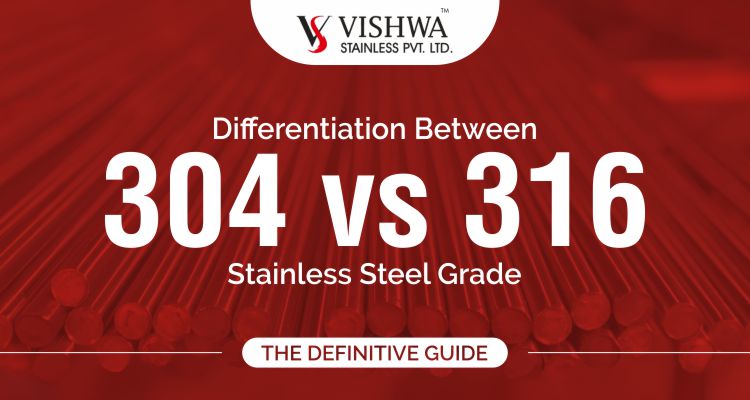
It has almost the same physical and mechanical properties as 304 stainless steel and contains a similar material make up. The key difference is that 316 stainless steel incorporates about 2 to 3 percent molybdenum.

The two steel grades are comparable in appearance chemical makeup and characteristics.
Stainless steel grade 304 vs 316. Stainless 316 contains more nickel than stainless 304 while 304 contains more chromium than 316. Stainless 304 usually consists of 18 chromium and 8 nickel. Stainless 316 is made up of 16 chromium 10 nickel and 2 molybdenum.
The two steel grades are comparable in appearance chemical makeup and characteristics. 304 vs 316 stainless steel. The main difference between 304 vs 316 stainless steel is the composition and corrosion resistance ss304 doesn t contain molybdenum while ss316 contains 2 3 molybdenum.
The addition of molybdenum provides pitting resistance in phosphoric acid acetic acid and dilute chloride solutions and provides corrosion resistance in sulfurous acid. 316 grade is the second most common form of stainless steel. It has almost the same physical and mechanical properties as 304 stainless steel and contains a similar material make up.
The key difference is that 316 stainless steel incorporates about 2 to 3 percent molybdenum. Type 316 stainless steel is an austenitic chromium nickel stainless and heat resisting steel with superior corrosion resistance as compared to other chromium nickel steels when exposed to many types of chemical corrodents such as sea water brine solutions and the like. Grade 304 is a basic austenitic stainless steel.
It contains a high level of nickel and chromium with the amount of chromium ranging from 18 to 20 by weight and nickel weighing in at between 8 and 10 5. Grade 304 s other alloying elements include silicon and manganese with iron comprising the remaining chemical composition. 304 grade and 316 grade stainless steel.
When dealing with stainless steel materials people often have a tough time differentiating between 304 grade stainless steel and 316 grade stainless steel. The lack of understanding that persists can be justified given the fact that on the surface the two grades of stainless steel in. As part of the five families of stainless steel 304 stainless steel and 316 stainless steel are austenitic grades that contain high levels of chromium and nickel.
This has the following impact. Chromium increases tensile strength hardness hardenability toughness resistance to wear and abrasion resistance to corrosion and scaling at elevated temperatures. Stainless steel equipment can be made out of all three types of stainless steel.
316 304 or 430. Choose the correct grade of stainless steel to meet the environment and application. The temperature tolerance of grade 316 stainless steel is close to that of grade 304 being just a little bit lower.
As stated in an ak steel data sheet for grade 316 stainless steel the melting range of 316 ss is 2 500 f 2 550 f 1 371 c 1 399 c roughly 50 to 100 degrees fahrenheit lower than the melting point of grade. Chemical composition of stainless steel 304 316l 904l commonly found in watches and watch bands. Stainless steel grade 316l.
Type 316 stainless steel is the second common grade of steel. As we said it has better resistance to corrosion and acids because it is made of same elements as grade 304 with addition of molybdenum.